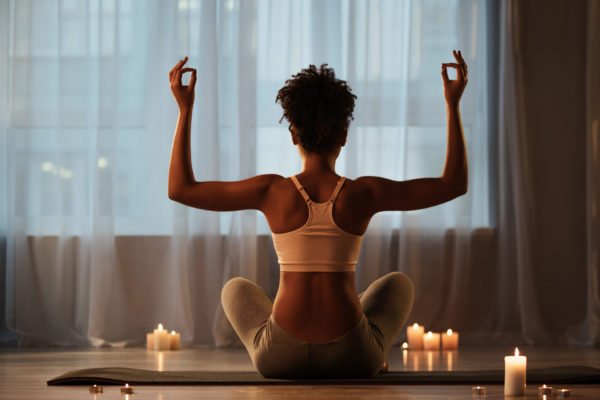
The Surprising Health Benefits Of Walking Backwards
By
4 days ago
Flip it and reverse it, in the name of wellness
Move over Hot Girl Walk: in 2024 the trendiest way to stroll is backwards, according to TikTok. Backwards walking is all over the platform right now, and unlike some other wellness trends as of late (oatzempic, we’re looking at you), this one actually has legs. We all know walking is good for us, boosting cardiovascular fitness and improving bone health. But it turns out just by switching direction, you’ll reap a whole host of other health benefits – provided you’re happy to accept a few strange looks from your neighbours.
Also known as retro walking, backwards walking is nothing new. For many years it has been used as a rehabilitative measure, as well as featuring in some sports training programmes – but the trend has been discovered by a whole new audience lately after going viral on TikTok. So just what is so beneficial about reversing your step?
Retro Walking: 5 Key Benefits
Strengthens muscles
Walking backwards targets different muscles than walking forwards. It can help build strength in your quads, hamstrings and glutes – plus your core and lower back have to work harder to keep you balanced. As walking backwards causes us to take shorter, more frequent steps, it also helps build muscular endurance in our lower legs, whilst protecting the joints.
Reducing lower back pain
Backwards walking could help with chronic lower back pain too, as it increases hamstring flexibility. Biomechanics expert Janet Dufek told the BBC: ‘Our research has shown that, indirectly, backward walking has some benefits relative to lower back pain simply because you’re stretching the hamstrings. Often one of the pieces that’s tied to lower back pain is tight hamstrings.’
@tiffwonglifts everyone should be walking backwards on the tread for your lower body!!! #treadmill #backwardsonthetreadmil #hipmobility #gymtips #gymmotivation ♬ Flowers – Miley Cyrus
Improving balance
Moving backwards is tricky, which is partly because it throws your balance off kilter. Engaging in retro walking can therefore help improve balance and coordination, as concluded by this 2021 study published in the National Library of Medicine.
An effective workout
Walking of any kind is beneficial for heart health and burning calories – but moving backwards ups the ante when it comes to energy expenditure. A backwards stroll requires up to 30 percent more energy than moving forwards, meaning the body has to work harder and creating more of a challenging workout.
Enhances cognitive function
The effects aren’t just physical: backwards walking may also have benefits for your brain. Scientists have found differences in the location of neural activity when stepping backwards in comparison to stepping forwards, with the prefrontal cortex – which regulates our thoughts, actions and emotions – particularly active during backwards walking.
One study published in Sage Journals explored how stepping in different directions affected participants’ ability to solve a Stroop test, which measures a person’s processing and reactive abilities. It found participants stepping backwards had faster reaction times compared to those stepping forwards or sideways, likely because their brains were already more active.
Is Backwards Walking Safe?
Clearly, it’s important to be careful when moving backwards as you can’t see where you’re going. That’s why beginners are recommended to start on treadmills, where you’re free of hurdles, and can hold onto the handrails of the machine for extra support. Begin at a low speed and attach the safety clip to you. If you’re braving it outside, consider going with a partner and taking it in turns – or try in a garden or large green space, where you won’t risk crashing into lamp posts (or other people).










